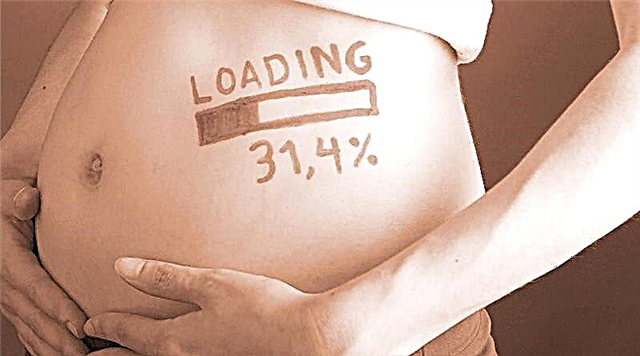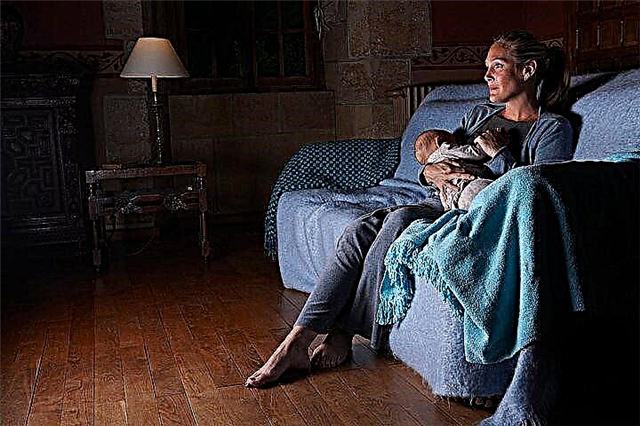Infant cramping may occur during feeding, upon waking, during sleep, or when falling asleep. Regardless of the reasons that cause them, parents should remain calm and be able to provide first aid to the baby.

Infant convulsions
Important! A visit to a doctor is mandatory, as even short-term seizures can be a symptom of a serious illness.
What are seizures
Convulsions in a child are involuntary, rapid, rhythmic muscle contractions. They may be accompanied by the following symptoms:
- short-term loss of consciousness;
- rolling eyes;
- rapid breathing.
Anxiety symptoms can also appear before the onset of seizures or after they stop:
- cry;
- drowsiness;
- lethargy of the muscles.
What can provoke seizures in a dream
Not all newborns have seizures in sleep indicate the manifestation of pathologies in the activity of the brain and central nervous system. They can be triggered by the following factors:
- Flickering light in the room. It is a strong irritant for the not yet formed nervous system of the baby. The cramps caused by this factor in a child's sleep immediately disappear after the light stops flickering or turns off;
- Lack of moisture. If the water-salt balance in the body is disturbed due to dehydration, then the electrical conductivity of the nerve fibers is disturbed, which causes muscle spasms. Replenishing the body with moisture quickly solves the problem;
- Conducting routine vaccinations. Very rarely, cramps when falling asleep in a child can be triggered by an allergic reaction to the vaccine;
- Increased temperature in the sleeping room. When the baby's body overheats, conditions are created in the body to reduce its oxygen saturation (hypoxia), which is a factor in why the baby has convulsive spasms;
- High body temperature for respiratory infections, pneumonia.
The main types of seizures
There are several types of seizures, depending on the symptoms and causes that characterize them.
Tonic
Tonic seizures are characterized by muscle tension that causes the child to stretch out to full height, tilting the head back. The arms are sometimes bent. At the same time, muscle tone is maintained for relatively long periods of time.
Important! In many cases, the baby may additionally experience respiratory failure, eyelid trembling, nystagmus (frequent involuntary oscillatory eye movements).
Clonic
Clonic seizures manifest as cyclic muscle spasms of varying duration and severity. The phases of tension in the infant's body are interrupted by phases of relaxation, during which the part of the body affected by the spasm, for example, a limb, spontaneously moves forward and backward. Convulsions of this type are usually observed on a limited part of the body: arm, leg, face.

Tonic and clonic spasms
There are mixed attacks. Clonic-tonic seizures occur in two phases. First, the elongated body vibrates without changing position, the child's fists and jaws are clenched (teeth creaking may be observed), the legs are extended, the head is thrown back. Then the facial muscles contract and the eyes move rapidly.
Febrile
Febrile seizures are most common in children aged 6 months to 5 years. These seizures are not associated with CNS infection or epilepsy.
Important! It is believed that febrile seizures affect up to 5% of children and are slightly more common in boys.
Febrile seizures can occur when the body temperature rises above 38.5 degrees, or when it rises very quickly. Most often, these seizures occur during upper respiratory tract infections, otitis media, or pneumonia. Sometimes convulsions occur when swimming if the water temperature is too high.

Febrile seizures
This type of seizure is divided into two types:
- simple, lasting about 13 minutes and not repeating throughout the day;
- complex, which can last more than 15 minutes and are repeated in the next 24 hours.
After an attack, the baby becomes weak and drowsy.
Respiratory-affective
Such convulsions in a child during sleep are typical for very sensitive children who have experienced emotional stress the day before. They often occur when crying. Age of possible appearance - 6 months-3 years. In premature babies, seizures are observed outside of the emotional background, just when they sleep on their tummy.
Epileptic
Epilepsy can be caused by a genetic predisposition or acquired as a result of damage to neurons after trauma, due to vascular, metabolic, inflammatory diseases.
In children with epilepsy, the brain is susceptible to epileptic seizures due to cell dysfunction. Neurons are activated by the wrong impulses, which leads to stimulation of the part of the body that they control.
An epileptic seizure in infants can also be recognized by a swallowing disorder. A generalized seizure affects the entire body and can lead to loss of consciousness. During epileptic seizures, involuntary urination, saliva, and shortness of breath appear. Usually the attack does not last long, up to several minutes. After it, the baby can fall asleep.
Important! Sometimes epilepsy occurs without seizures. It's just that the child looks absent for a short time, not responding to external stimuli.
Causes of seizures in a dream
Causes of seizures in a child in a dream, when falling asleep and waking up, associated with pathological processes in the body:
- Perinatal (from the 28th week of pregnancy to the first week of the baby's life) damage - cerebral hypoxia, intracranial bleeding;
- Epilepsy. Most often it manifests itself between the ages of 3 to 9 months. Seizures can take the form of sudden muscle spasms, during which the child bends at the waist, pulling the leg up to the stomach. At this time, they can easily be mistaken for intestinal colic;
Important! Convulsions that occur up to 3 days after childbirth are in most cases associated with hypoxia and trauma, between the 3rd and 8th day of life - metabolic disorders.
- Benign and malignant neoplasms of the brain;
- Meningitis. It is accompanied by high fever, nausea, vomiting;

Spasms with meningitis
- If the mother took drugs during pregnancy, convulsions in the newborn occur against the background of withdrawal syndrome;
- Congenital metabolic defects such as maple syrup disease
- Hypoglycemia (low blood glucose). Hypoglycemic seizures can be associated with infection, impaired glucose absorption, intrauterine dystrophy, premature birth;
- Hypocalcemia (calcium deficiency in the blood). It manifests itself around the 3rd day of life in the form of seizures with apnea. It occurs in premature babies, as well as those born to mothers with diabetes.
Helping a child with seizures
Onset of seizures – a very dramatic moment for parents, here you need to know what to do:
- Remain calm, never leave the observation of the child for a second;
- Put the baby on its side, on a soft surface, making sure that there are no objects nearby that he can hit or hurt;
- Provide air flow;
- If the convulsions were associated with temperature, after the end of the attack, enter rectally an antipyretic agent, in addition, you can use rubbing with water. Rubdowns cannot be used if the convulsions continue for a long time, the child turns pale, his lips turn blue.

Rubdown with water at a temperature
Important! During an attack, it is forbidden to give the baby any pills, food, drink.
If the convulsions occur for the first time, then the child must be examined by a doctor. When the convulsions do not stop for more than 5 minutes or are repeated, and the baby loses consciousness, you need to call the emergency service.
Prevention of night cramps
To prevent the occurrence of night cramps, you must:
- Prevent dehydration of the body. Pay attention to the sufficient amount of water used by the child, especially in hot weather;

Newborn baby drinks water
- For active children, ensure peace before bedtime: exclude lively games, listening to loud music;
- Monitor the temperature and timely airing in the baby's room. A comfortable sleep temperature should be 18-20 degrees;
- Try not to turn on the light in the baby's room at night. Low-intensity soft lighting is acceptable when falling asleep.
Seizures are uncommon in young children. They always scare parents, but they are not necessarily symptoms of dangerous pathologies.



